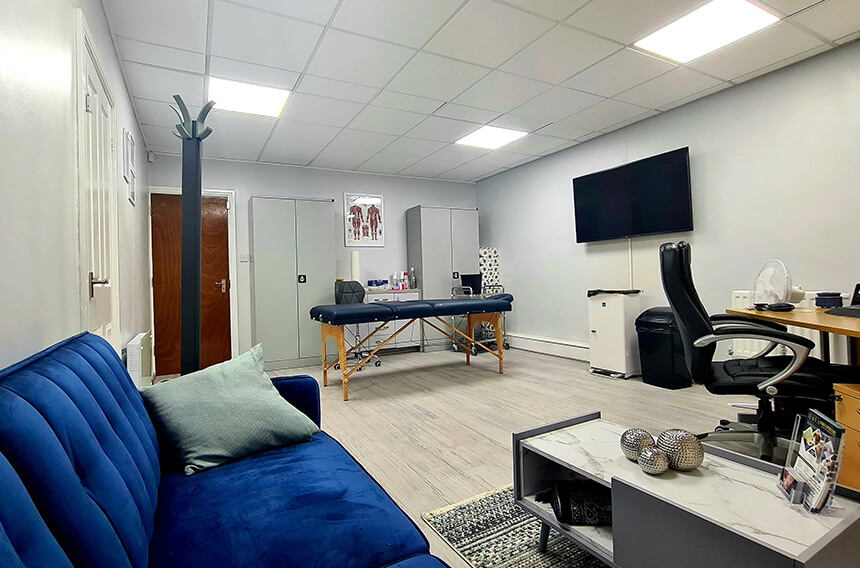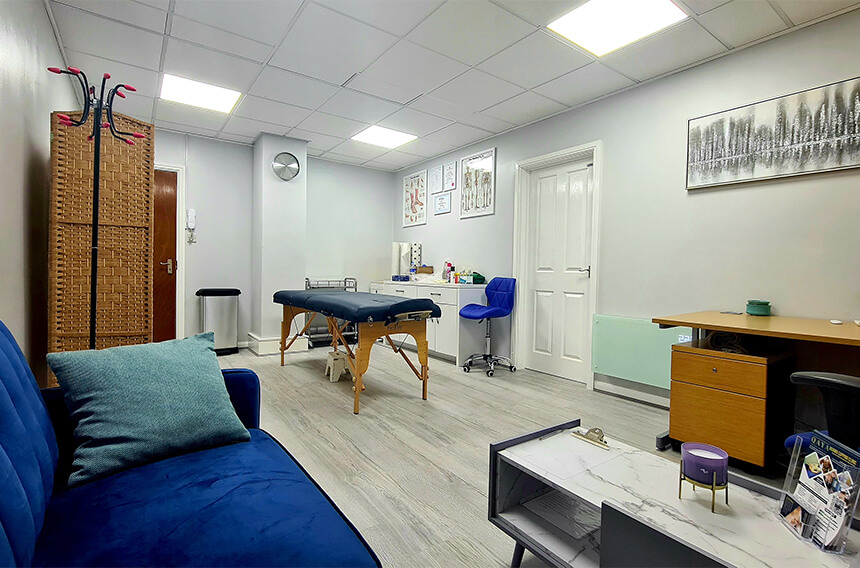Hijama Cupping For Irritable Bowel Syndrome & Other Digestive Disorders (IBS)
Back to blogsGet in touchMany of us have suffered from the occasional stomach ache or bout of constipation or diarrhoea. For some, problems like these are not as rare and can occur daily. Internal pain or discomfort in the abdominal area has often been linked to disorders of the digestive system, which is responsible for the breakdown and absorption of food and drink. Before we go on to discuss different conditions related to digestion, it is important for our readers to have basic knowledge of the aforementioned system.
The digestive system is made up of a number of organs, starting from the mouth and salivary glands which produce enzymes to start breaking food down into nutrients that can be easily absorbed into the body. The food then travels down the oesophagus or food pipe to reach the stomach, where it is then broken down even more by gastric acid and bile. The liver filters the blood that passes from the digestive tract before it reaches the rest of the body. The remaining food and nutrients are then carried through the small intestines and colon to be absorbed into the body. The gallbladder stores bile before releasing it into the intestines. Once the digestive tract has taken what it can from it, the leftover food turns into stools, which are stored in the rectum before passing out of the body via the anus. Prior to this, the pancreas is responsible for producing insulin, which regulates blood sugar levels, and secreting digestive enzymes into the intestines.

These organs can fail to function properly during the course of digestion, which can cause problems such as:
- Irritable Bowel Syndrome
- Gastroesophageal Reflux Disease
- Pancreatitis
- Peptic ulcers
- Gastritis
- Gallstones
Irritable Bowel Syndrome or IBS is a chronic condition affecting the digestive system. It has been thought to be caused by hyper sensitivity of the intestines or by digestive problems such as food passing too slow or too fast through the intestines. Another possible cause is stress, which may result in the chemicals present in the gut becoming imbalanced and disrupting its normal functions. This disruption could be the reason why patients frequently experience the following symptoms: abdominal pains or cramps which may be relieved by excretion, diarrhoea, constipation, a bloated stomach, excessive wind, the urgent need to pass stools, feeling that the bowels have not been emptied properly, a lack of energy, backaches and nausea.

G.E.R.D is an abbreviation of the title, Gastroesophageal Reflux Disease. As its name suggests, it is a chronic condition wherein the band of muscle around the lower end of the oesophagus relaxes inappropriately and allows the acidic liquid content of the stomach to flow back up into the oesophagus, which is known as a reflux. The liquid, a mixture of digestive acids, Pepsin (a digestive enzyme) and bile, can cause the lining of the oesophagus to become inflamed and ultimately damage it. Symptoms of G.E.R.D have been noted as heart burn (which is a burning pain in the middle of the chest) usually after meals, regurgitation (food coming back up into the mouth), hoarseness of the voice, a sore throat, dry coughing at night, saliva increase, bad breath, nausea, ear-aches and a lump-like sensation in the throat.

Pancreatitis is usually caused by a problem with the digestive enzymes produced in the pancreas, causing them to start digesting the organ which becomes inflamed in response. Causes of pancreatitis have been linked to gallstones and alcohol consumption. It can come in both acute and chronic form and, if left untreated, can result in further complications. In severe cases, the inflammation can prove to be fatal by causing the tissue of the pancreas to die or by affecting the function of the heart, lungs or kidneys. The main symptom of pancreatitis is a severe aching pain around the top of the stomach which may or may not radiate to the back and that worsens over time. Other symptoms include nausea, diarrhoea, vomiting, a loss of appetite, tenderness in the abdominal region, weight loss and a high temperature.

Peptic ulcers, also known as stomach or gastric ulcers, are open sores which develop in the lining of stomach or at the top of the intestines. They can be caused by acid after the protective mucus lining the stomach has been worn down, normally by the H. pylori bacteria or non-steroidal anti-inflammatory drugs (NSAIDs). Patients with peptic ulcers often complain of burning or gnawing pains in their abdomen, radiating to areas such as their neck, navel or back, which lasts from a few minutes to a few hours. The pain sometimes begins after meals, the length of time is takes to start dependant on how far the ulcer is in the abdomen. Other symptoms include heartburn, loss of appetite, vomiting and bloating.

Gastritis occurs when the defensive barrier of mucus in the stomach is broken down and the lining of the stomach becomes inflamed. This could be caused by many things, from infection by the H. pylori bacteria to excessive alcohol consumption. Though many go without symptoms, those that do have them often complain of gnawing or burning pains in the stomach, nausea, vomiting, feeling full after eating. Having gastritis can lead to bleeding, ulcers or the growth of polyps or tumours, both cancerous or non-cancerous, in the stomach.

Gallstones are small balls of cholesterol which develop in the gallbladder, usually formed by high levels of cholesterol in the bile or a chemical imbalances in the organ. Treatment is not needed unless they block the duct or opening of the gallbladder. Any symptoms related to gallstones form gallstones disease or cholelithiasis. If a stone becomes trapped in the duct of the gallbladder, it can cause sudden severe abdominal pain, which can be felt in the centre of the abdomen between the breast bone and belly button or to the right, beneath the ribs, spreading to the side and up to the shoulder, that lasts between 1 – 5 hours. The pain is generally not relieved by passing wind or stools or by vomiting. These blockages can also result in inflammation of the gallbladder or cholecystitis. Symptoms of cholecystitis include persistent pain, a high temperature and jaundice. If the gallstone moves into the pancreas, it can cause acute pancreatitis and result in the symptoms of cholecystitis as well as a rapid heart beat, shivering, confusion and abdominal pain that progressively worsens over time.

Due to the fact that most of these disorders are related to damage inflicted upon their respective organs, cups would need to be placed on localised sites on the back of the patient during a Hijama session. These sites may have a greater and more accurate effect on the patient if the cups are placed in line with each organ to the best of the practitioner’s ability. By doing so, blood could be drawn to the area and aid the repair of any damaged tissue such as weakened oesophageal muscles or inflamed pancreas cells. In addition to that, any obstructive waste, such as excess bile or cholesterol, could be removed from inside and around the affected organ. Both mechanisms could serve to regulate the normal processes of the digestive system and relieve any symptoms caused by its dysfunction.
We hope that this information has benefitted you, our dear readers.
Images referenced from:
(1) http://www.nutritionalhealthenterprises.com/images/body.jpg
(2) http://www.medfriendly.com/images/irritable-bowel-syndrome.jpg
(3) http://images.lifescript.com/images/ebsco/images/si1347.jpg
(4) https://s.graphiq.com/sites/default/files/4553/media/images/Pancreatitis_chronic_3984523.jpg
(5) http://www.physio-pedia.com/images/e/ed/Peptic-ulcers-lg-enlg.jpg
(6) http://intranet.tdmu.edu.ua/data/kafedra/internal/propedeutic_vn_des/classes_stud/en/med/lik/ptn/Internal%20Medicine%20Propedeutics/3/Lesson_10_Bronchitis_pneumonia_Gastritis_ulcer.files/image040.jpg
(7) http://www.emedmd.com/sites/default/files/Gallstones.jpg
OVER 10K HAPPY CLIENTS ACROSS THE UK INCLUDING BIRMINGHAM, WALSALL, DUDLEY, STOURBRIDGE, OLDBURY, WOLVERHAMPTON, COVENTRY, LEAMINGTON SPA, NOTTINGHAM, SOLIHULL, TELFORD, GLOUCESTER, WORCESTER, DERBY, BRISTOL, STOKE AND SUTTON COLDFIELD INCLUDING THE FOLLOWING AREAS:
Acocks Green, Alum Rock, Aston, Balsall Heath, Birmingham City Centre, Bordesley Green, Bromford, Castle Vale, Digbeth, Edgbaston, Erdington, Garretts Green, Great Barr, Hall Green, Handsworth, Harborne, Hay Mills, Highgate, Hockley, Hodge Hill, Jewellery Quarter, King's Heath, Kings Norton, Kingstanding, Kitts Green, Ladywood, Lozells, Moseley, Nechells, Newtown, Northfield, Nuneaton, Pelham, Perry Barr, Quinton, Saltley, Selly Oak, Selly Park, Shard End, Sheldon, Small Heath, Smethwick, South Yardley, Sparkbrook, Sparkhill, Stechford, Tipton, Tyseley, Ward End, Washwood Heath, Wednesbury, West Bromwich, Winson Green, Witton, Yardley, Yardley Wood
Our therapists are fully insured for all services we provide. Qaya Clinic is based in Edgbaston Medical Village, Birmingham City Centre. WE ARE OUTSIDE THE CLEAN AIR ZONE with free nearby parking.






